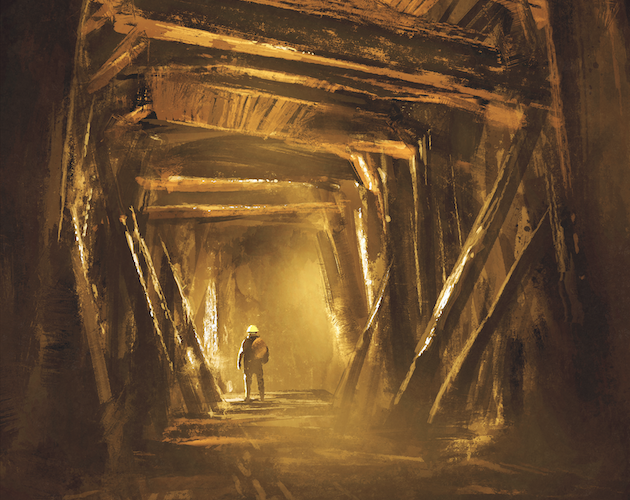We’ve been using OSE (free here) to play A1 Slave Pits of the Undercity lately, to slake our curiosity about the hobby’s origins and, oh boy, have we come a long way.

Don’t get me wrong; OSE is an incredible achievement. It’s an incredibly digestible revamp of old school basic Dnd, with a few of the kinks gently smoothed, with annotations explaining where and why changes from the historical material have been made. As a work of conservation and popularization, it is incredible. If you’ve ever had any interest in trying an older module, OSE is the way to do it.
If you disagree, leave a comment.
That being said, if you’re used to playing 21st-century versions of the ‘world’s most popular roleplaying game’, you will find a lot of rough spots. That’s all part of it! There’s a lot of fantastic stuff about the old school systems, but who has time for traditionalism? Here’s the top six things I’m glad we’re leaving in the past.
1. Initiative
I love side initiative as much as anyone, but why a d6? You’re tying 1 in every 6 times you’re rolling initiative! And don’t get me started on the move, missile, spell, melee order; our poor beleaguered fighter was denied their turn three times tonight, when the orc they’d just rocked up on fell dead in a ranged volley.
2. Saving Throws
Third Edition was right beyond belief to bin the quintuple-save-system. Death/Poison, Wands, Paralysis/Petrify, Breath Weapons, Spells: these are not universal categories. What save covers paralytic poisons? What narrative juice is squeezed out of differentiating between Wands and Spells? How often have you reached for a Save v Breath to cover a non-dragon-related area-effect?
And, hey, what if a poison is super mild? Super deadly? Save at +4/-4 is not any less clunky than just attaching a DC to a given effect. Even going the Knave route (all DCs are presumed to be 16) is vastly preferable to referencing five nebulously defined saves. Even a roll-under ability-score system would be preferable.
3. Experience Points
Consider the jankiness of classes having non-standard XP bands per level; if you’re making up fourth-level characters to start a module like A1, your thief starts at 4,800xp, while your elf has 16,000. Now forget that jankiness, because it pales in comparison to the nonsense of prime attributes. Each class is pegged to an ability score which introduces a percentage modifier to the xp you gain. In other words, not only is everyone reaching for different bands, you’re all recording different amounts of xp based on the same amount of treasure.
You might be tempted to house rule out prime attributes, but wait! Ability scores barely matter outside of this rather baroque consideration. House rule at your peril; you risk making Intelligence truly irrelevant to your magic user.
4. Percentile Skills
Playing a thief? I hope you enjoy climbing sheer surfaces. You’ll have to wait until level seven to have a better than 50% chance at using any of your other skills. Have a great dexterity score? Don’t worry; it won’t affect your ability to sneak or pick pockets in any way, other than (as previously mentioned) adding a little multiplicative math to the end each session.
Unified resolution mechanics are great, and the designers of Third Edition deserve the adulation of all the land’s bards, but I’m no puritan. I love a d6 skill system; Lamentations of the Flame Princess’s Specialist class is a great fix, and Dolmenwood seems to be taking up a lot of that tradition. I just can’t mix d20, d6, d100, and roll under skill systems; it’s too much, man! Pick a lane!
5. Descending AC
I won’t beat a dead horse. THAC0 sucks, and I’m glad it’s gone. Including Ascending Armour Class rules is one of the best things about OSE. That being said, having both sets of information presented side by side is a constant reminder of how far the hobby has come.
6. Overpowered Wizards
Ok, so I don’t really dislike Overpowered Wizards, per se, but I do notice them. Once you hit fifth level, and you’ve got Knock and Fireball, your thief is semi-obsolete as a skill monkey, and your fighter is relegated to damage sponge.
Which is great if you like playing wizards.
And I do.
Final Thoughts
Play OSE! It’s a lot of fun and, if you’re like me, you’ll learn a ton about the history of the game. That being said, let’s not chain ourselves to what came before. Our tradition is innovation! The perfect version of DnD has not yet been written.
Who knows? It may be up to you!
Enjoy this article? Read more! Check out my reviews of the MOTHERSHIP modules I’ve played, or this article about Trolls. Want to support us? Try Wakeside, a dream-themed game of bounty hunting and magic!

INITIATIVE
The thing is that real combat is pure chaos. Combatants don’t always have the advantage of “going first.” No one really “takes turns” in combat, a viewpoint which is forced upon you with 3e-5e individual initiative. In B/X D&D/OSE, ties in initiative means that ALL combatants act all at once, simulating the actual chaos of combat. (And, yes, that means the wizard CAN be killed *and* get his spell off in the same round!) And a 1-in-6 chance (16.6%) for a tie is just about right to keep things interesting from a ludic point of view.
SAVING THROWS:
The problem here isn’t really the saving throws themselves, just the category names. In reality, those saves can be assigned to any save the DM thinks appropriate. It was often that way even if published adventures. As far as names go, a rose by any other name is still a rose.
EXPERIENCE POINTS
Experience points for classes are “janky” because classes are –intentionally– not balanced with one another. Some classes are front-loaded with extra abilities, which accounts for the extra XP requirement for level advancement. The most obvious example is the ELF class, which is, essentially, a fighter/wizard. Players must decide whether the trade-off is worth it: Do they want the extra abilities up-front at the expense of slower advancement or not?
OVERPOWERED WIZARDS
Rules as written, wizard characters don’t often survive to make it to mid-level or higher. And that’s intentional too. From an in-world perspective, D&D Wizards are supposed to be rare. If it were easy to be a wizard, everyone would be one. And if they were superpowerful at lower levels, they’d dominate the game. So, by design, D&D wizards are severely UNDERpowered at lower levels. That’s why their power levels jump quite a bit once hitting upper-mid level. Players have to decide whether the pay off of flashy spells is worth the waiting. So, with wizard character mortality high, and power levels low until upper mid-level, overpowered wizards aren’t really the problem they’re made out to be.
If the fighter’s orc gets killed by missile fire, the fighter can just move to another target. Plus – who’s allowing shots into melee!?!? While it’s not disallowed, the original writers probably thought it was obvious enough that it didn’t need to be mentioned.